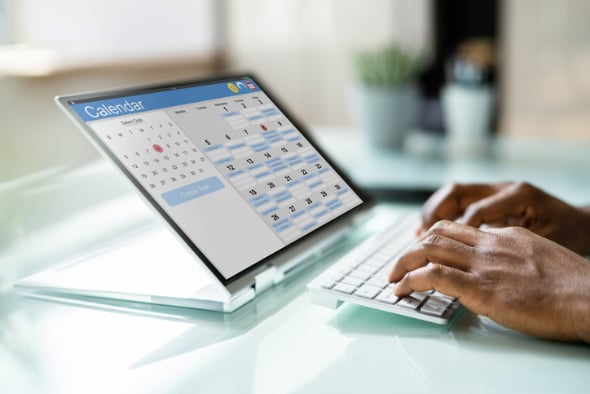What is RevPAR?
RevPAR definition: A hotel industry acronym that stands for revenue per available room.
It is used to measure the revenue that is generated by each available room on your property. It tells you your ability to fill your available rooms at an average rate.
While quite simple to calculate, RevPAR is one of the most important metrics used to gauge the success of your bed and breakfast.
Without tracking it, small accommodation providers will find it difficult to know how well they’re doing, and how to improve.
Here’s everything you need to know about how to maximise RevPAR at your small hotel.
All-in-one software to help maximise your RevPAR
Use Little Hotelier’s key reports and insights to make better pricing decisions.
Learn moreHow to calculate RevPAR
The RevPAR formula is surprisingly simple – it only takes a moment to calculate, and can give you an almost instant sense of how well your hotel is performing.
The formula for calculating your RevPAR is as follows:
RevPAR= Rooms revenue / Rooms available
You will calculate your RevPAR according to a specific point in time (day, month, or year), and compare it across the same time periods (for example, RevPAR across Fridays or Christmas holidays).
But to get a better understanding of how to calculate RevPAR in hotels, let’s look at an example.
Say your hotel has 50 rooms of which 40 (80%) are currently occupied at an average daily rate (ADR) of $100.
40 rooms x $100 ADR = $4000 total room revenue
$4000 / 50 rooms available = a RevPAR of $80
What is a good RevPAR index?
Using our RevPAR calculation above, how does a hotelier know whether a RevPAR of $80 is good or not? It’s difficult to say what a “successful” RevPAR is, as it really depends on the market, and is based on demand and other factors.
But one way to check is with the RevPAR index.
This measures your performance against similar hotels. You get the average RevPAR of your chosen comparison group, then index it against your own. An index of 100 means you are perfectly matching the performance of your competitors. An index above 100 is good, an index below 100 is not so good.
To calculate your RevPar index you’ll divide your RevPAR ($80) with that of your chosen group (let’s say $74), then multiply by 100, which in this case equals 108 – a good RevPar index.
Common RevPAR mistakes to avoid
If you have calculated your RevPAR or RevPAR index and found that it’s a little low, that may be an indication of a few common mistakes. Fix them, and you could see your RevPAR rise quickly and dramatically.
1. Too much reliance on OTAs
Don’t allocate too many rooms to an online travel agency (OTA).
They entice travellers with their discounts, and while it will increase your occupancy rate in the short term, you will lose money in the long run because of how much it costs you to service that room.
Learning how to strike a balance between direct and third party bookings is essential.
2. Underselling your rooms
Don’t try to charge less for rooms in an attempt to attract more guests. Instead, increase the perceived value of your room by adding additional extras.
You may find that by charging a higher rate and having fewer guests, you will actually increase your revenue (and service your guests better).
3. Spending too much
Try to reduce waste in your spending, especially when it comes to electricity. There are some ways to reduce your carbon footprint and save money at the same time – all without compromising the guest experience.
Another area to be aware of is breakfast items. Do you find that you’re always over-stocked and much of the bread goes to waste? Assess how much you really need so that the bread doesn’t go in the bin (along with the cash you spent on it).
Best five ways to increase RevPAR
Having solved some RevPAR issues, how might a hotelier further enhance this metric? Here are five ways you can increase RevPAR for your hotel:
1. Apply length of stay (LOS) restrictions
This is still the best way to increase revenue per room!
- Minimum length of stay (minLOS) can be applied when you anticipate a period of high demand followed by low demand. You accept longer duration stays and reject shorter duration stays for arrival. It helps you to increase occupancy during the slow period that follows (so that stays in the high demand period ‘spill over’ into the less demanding period).
- Maximum length of stay (maxLOS) can be applied when you expect to be able to sell out rooms at higher rates. You don’t accept reservations at specific discounted rates for multiple night stays, extending into the sold out period. Guests who want to stay beyond the maximum length of stay period can be charged rack rate for subsequent nights.
Remember that with all of the above, you need to be careful. If there isn’t sufficient demand, or if these tactics are poorly executed, it could have a negative effect on your bottom line.
2. Review room type attributes
See if you can increase revenue by adding new room type levels based on attributes like an excellent view, a balcony, or a big bath.
3. Enhance your offering
Increase room rates by giving guests access to exclusive perks that increase the perceived value of the rooms. For example, free shuttle to and from the airport, free pram hire, and free breakfast.
4. Improve online presence
Modern consumers are marketing savvy – they don’t trust businesses to talk about themselves, but they do trust other consumers. This makes ratings and reviews critical, particularly for hotels. Enhance your online presence by asking happy guests to leave reviews, and by replying to a good percentage of reviews, particularly any that raise issues.
5. Focus on direct bookings
Some bookings generate more revenue than others. With OTAs charging a commission fee of 15%-25% on every reservation they facilitate, this can see a $100 ADR drop as low as $75, which makes a huge difference to your RevPAR. The solution: focus on generating more direct bookings.
By Dean Elphick
Dean is the Senior Content Marketing Specialist of Little Hotelier, the all-in-one software solution purpose-built to make the lives of small accommodation providers easier. Dean has made writing and creating content his passion for the entirety of his professional life, which includes more than six years at Little Hotelier. Through content, Dean aims to provide education, inspiration, assistance, and, ultimately, value for small accommodation businesses looking to improve the way they run their operations (and live their life).
Table of contents
“My initial impression is that the new layout and calendar views are fantastic. It's still a work in progress, but things are going well so far.”
Owner, Chalet Guesthouse and Studio








